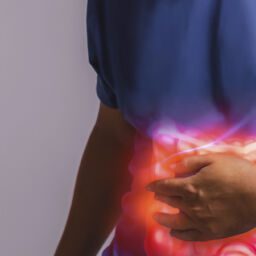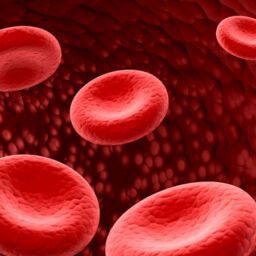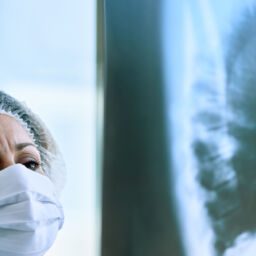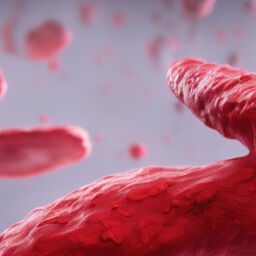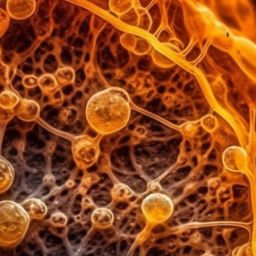
Breast cancer is one of the most common cancers in women. Learn about the symptoms, causes, and treatments in this comprehensive guide.
Breast cancer is a condition that affects many women around the world. It is important to be aware of the symptoms, causes, and available treatments for this disease. In this complete guide, you will find all the information you need to better understand this condition.
What is breast cancer?
Breast cancer is a disease that develops in the cells of the breast. It can appear in different forms, but most often it presents as a tumour that can be detected through palpation or with a mammogram. The exact causes of this disease are not known, but certain risk factors have been identified, such as age, family history, smoking, and alcohol consumption. Treatments available for breast cancer include surgery, radiotherapy, chemotherapy, and hormone therapy.
Anatomy of the Breast
The female breast is a unique structure with specific functions. It is made up of glandular tissue and fat, which work together to produce the milk needed for infant feeding.
The female breast is composed of two main parts: the mammary gland and the nipple. The mammary gland (or glandular tissue) lies beneath the skin and contains milk-producing glands called lobules, alveoli (milk sacs), and ducts (tiny tubes). The nipple is the pigmented area at the tip of each breast, which can become erect during sexual arousal or breastfeeding. The areola is the darker area surrounding the nipple, which enlarges during pregnancy and breastfeeding.
Breasts also contain fatty tissue, which provides support during activities such as walking or running.
Types of breast cancer
There are several types of breast cancer, each with its own risk factors and symptoms. These include:
Invasive Ductal Carcinoma (IDC): Invasive ductal carcinoma is the most common type of invasive breast cancer. It develops in the walls of the milk ducts within the breast. IDC accounts for 90% of all breast cancers in the United States.
Invasive Lobular Carcinoma (ILC): ILC develops in the lobules, which are small glands that produce milk during pregnancy. ILC is less common than IDC, accounting for only 5 to 10% of all invasive breast cancers in the country.
Ductal Carcinoma In Situ (DCIS): DCIS is a non-invasive form of breast cancer that starts in the milk ducts but does not spread beyond them.
The symptoms of breast cancer.
Breast cancer symptoms can vary from person to person, but the most common signs include a lump or mass in the breast or under the arm, a change in the size or shape of the breast, pain or tenderness in the breast, nipple discharge, redness or dimpling of the skin on the breast, or a change in the appearance of the nipple. It is important to see a doctor if you notice any of these symptoms, as the earlier breast cancer is detected, the easier it is to treat.
Risk factors and causes of breast cancer.
The exact causes of breast cancer are not yet known, but there are several risk factors that may increase the likelihood of developing the disease. These risk factors include age, a family history of breast cancer, genetic mutations, hormone exposure, obesity, alcohol consumption, and smoking. It is important to understand these risk factors and take steps to reduce your risk of developing breast cancer.
Screening Measures
Breast cancer screening measures are procedures used to detect breast cancer in its early stages, often before it can be felt or seen by an individual or a doctor.
These measures include:
Mammography. A mammogram is an X-ray of the breasts that uses low doses of radiation to produce images of breast tissue. Screening mammograms use less radiation than diagnostic mammograms, which are performed when a woman has symptoms or after breast cancer has been diagnosed.
Breast self-examination (BSE). This involves examining your own breasts for any changes, such as lumps or skin thickening. It is recommended to perform this examination once a month and to pay close attention if you notice new lumps, changes in size or shape, dimpling of the skin, redness, or nipple discharge (including blood).
Breast ultrasound. This test uses sound waves to create images of the internal structures and organs in your body. Ultrasound can help doctors identify abnormalities in breast tissue, including cysts and benign tumours, before they become cancerous.
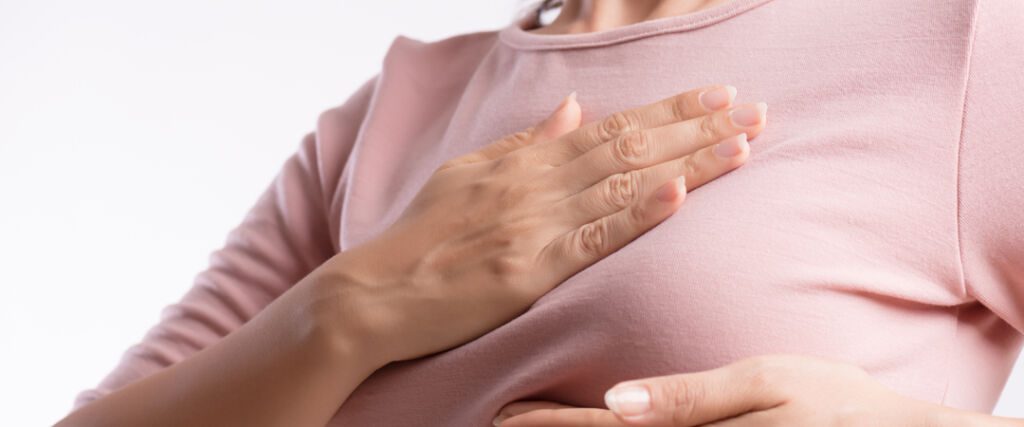
There are several types of treatments for breast cancer, depending on the stage of the disease and the patient’s overall health. The most common treatments include surgery, radiotherapy, chemotherapy, hormone therapy, and targeted therapy. Surgery involves removing the tumour and may be followed by radiotherapy to destroy any remaining cancer cells. Chemotherapy uses medication to kill cancer cells, while hormone therapy blocks hormones that stimulate the growth of cancer cells. Targeted therapy uses drugs to target specific proteins found on cancer cells. Your doctor will discuss the most appropriate treatment options for your particular case.
The stage of cancer describes the extent of its spread in your body. The stage of cancer is one of the most important factors in determining the prognosis (outlook).
The most commonly used staging system by doctors to describe breast cancer is called TNM (tumour, node, metastasis). The higher the number, the more advanced the cancer.
Stage 0 Breast Cancer
Stage 0 breast cancers are non-invasive and do not spread beyond the milk ducts or lobules. They are usually detected during routine mammograms and can often be treated with surgery alone.
Stage I Breast Cancer
Stage I breast cancers can be cured if detected early and treated promptly with surgery and chemotherapy or radiotherapy. Stage I cancers may also require hormone therapy medications or a combination of chemotherapy and hormone therapy.
Stage II Breast Cancer
Stage II breast cancers have spread outside the breast but not beyond nearby lymph nodes. This means they may have reached the lymph nodes under your arm on the same side of your body, for example, the lymph nodes under your arm near where your armpit meets your chest wall. Stage II cancers may also require additional therapies, such as hormone therapy.
Breast cancer is the most common cancer in women. It is also one of the easiest to cure, with a survival rate of over 90% within five years of diagnosis.
The prognosis depends on several factors, including:
Age at the time of diagnosis. Younger women generally have a better survival rate than older women.
The stage (extent) of the cancer at diagnosis. The earlier the cancer is detected, the better the prognosis.
Type (histology) of breast cancer. Triple-negative breast cancer tends to be more aggressive than other types and has a poorer prognosis.
Although there is no guaranteed way to prevent breast cancer, there are steps women can take to reduce their risk. These include maintaining a healthy weight, exercising regularly, limiting alcohol consumption, avoiding smoking and exposure to harmful chemicals, and performing regular breast self-examinations. Women with a family history of breast cancer may also benefit from genetic screening and regular medical check-ups. It is important to discuss any potential risk factors with your doctor and take steps to maintain overall good health.
The choice of what to do after breast cancer surgery, medical treatment, and other therapies is a very personal decision.
This decision depends on many factors, including your treatment goals, quality of life, how long you’ve had cancer, and its stage of progression. You should also consider whether you want to have children in the future.
You may be asked to make these decisions while still in the hospital or shortly after being discharged. It can sometimes help to talk to a counsellor or someone else who has been through a similar experience.
There is no one-size-fits-all answer for women with breast cancer. However, understanding the options available to you can help you make an informed decision about what is best for you now and in the future.
Depending on the type of surgery you’ve had and your preferences, you can choose from the following options:
Breast reconstruction involves recreating a breast that has been partially or completely removed. This can be done using an implant.
Breast prosthesis is a pad that replaces the breast. It is worn inside your bra to create the natural shape of a breast.
Staying flat means choosing not to have breast reconstruction or wear a breast prosthesis after breast cancer surgery.
Smoking is a risk factor for breast cancer. Quitting smoking can be challenging, but there are ways to achieve it.
What is smoking and breast cancer?
Smoking refers to inhaling the smoke from burning tobacco products, such as cigarettes, cigars, and pipes. The tar produced by smoking contains substances that can cause cancer.
What are the causes?
The exact cause of breast cancer is unknown, but genetics are believed to play a role, and environmental factors, including lifestyle choices, can influence whether the disease develops.
How does smoking cause breast cancer?
Smoking increases the risk of developing breast cancer because it contains nicotine, which affects your hormones by speeding up cell division, potentially allowing certain cancers to grow faster. Tobacco smoke also contains carcinogens (cancer-causing substances). These substances can damage the DNA in your cells, leading to mutations that may cause uncontrolled cell growth or tumour formation.
You ask, our teams answer.
F.A.Q
A mammogram is an X-ray of the breast. It can help detect breast cancer in women over 40 and at any age if you have a family history of breast cancer.
A mammogram is the best way to detect breast cancer at an early stage when it is easiest to treat. However, there are other ways to screen for breast cancer, such as self-examinations and clinical breast exams performed by your doctor or nurse.
Routine mammograms are usually carried out once a year between the ages of 50 and 74. If you have a family history of breast cancer or other risk factors, you should begin having them from the age of 40. If you are under 40 but at high risk, ask your doctor if you should start having mammograms earlier than usual.
Mammograms are not perfect – they cannot detect all tumours – but they remain the best tool we have for fighting this disease.
What does a mammogram involve?
The equipment used during a mammogram is similar to that used for X-rays in a hospital or clinic, but on a smaller scale. The doctor places your breast between two plates, then moves one plate away from your body while taking an image as it moves (this process is repeated on both sides). The resulting image shows the bones of your breast as well as any abnormalities, such as lumps or cysts, which could indicate cancerous tumours developing inside (if you have dense breasts) or around them (if they are enlarged).
Paget’s disease of the nipple is a rare condition that causes pain and swelling in one or both nipples. It can also lead to skin changes, such as thickening, flaking, and ulceration.
Paget’s disease of the nipple usually affects only one breast. It primarily occurs in women over the age of 50, although it can also affect men and children. It is more common in individuals with other bone diseases (such as osteoporosis).
There are several types of Paget’s disease of the nipple:
Localised Paget’s disease – it affects a small area of skin around one nipple and does not spread to other parts of the body.
Diffuse Paget’s disease – it affects the skin around both nipples, but not much else.
Generalised Paget’s disease (also known as Paget’s disease of bone) – it affects all the bones in the body.
Breast cancer recurrence is the return of breast cancer after treatment. You may have no symptoms or only mild symptoms. If the recurrence is detected early, treatment is often more effective.
Signs and symptoms of breast cancer recurrence
The main symptom of breast cancer recurrence is the presence of a lump or thickening in the breast. However, it is important to note that many other conditions can cause these symptoms, which is why it’s essential to consult your doctor if you notice any changes.
Other signs and symptoms may include:
- A change in the size or shape of your breast
- Discharge from the nipple
- A change in the texture of the skin, such as thickening or peeling (known as peau d’orange).
Benign breast lesions are non-cancerous growths that occur in breast tissue. These lesions can range from small cysts and fatty tumours to fibrocystic changes (painful, lumpy breasts).
Benign Breast Lesions
There are many types of benign breast lesions, typically named based on their appearance. For example, a fibroadenoma is a tumour that feels like a grape cluster under the skin, while fibrocystic changes feel like nodules or lumps beneath the surface. Benign breast lesions can also be classified as asymptomatic or non-invasive, meaning they do not spread to or damage other tissues or organs.
The most common benign breast lesion is fibrocystic changes, which affect around 80% of women during their lifetime and cause symptoms such as breast pain and tenderness. Other common benign breast tumours include:
Fibroadenoma: A lump beneath the nipple surface, irregular in shape and rubbery in texture, which may have multiple ducts (channels).
Ductal carcinoma in situ (DCIS): DCIS is a precancerous condition where abnormal cells grow within the milk ducts.
Complete remission of breast cancer means there are no longer any signs of cancer in the body. The cancer has been entirely eliminated. Most people who achieve complete remission are considered cured.
Complete remission differs from partial remission, which means there are still signs of cancer in your body. You may still need treatment to eliminate the remaining cancer cells and prevent their recurrence.
Most people with breast cancer will experience partial remission at some point during their treatment. However, if you achieve complete remission, you are less likely to see your breast cancer return compared to someone who has only experienced partial remission.
If you are diagnosed with breast cancer, your doctor will inform you whether it is possible to achieve complete remission without first undergoing surgery or chemotherapy.
The survival rate for women with breast cancer is over 90%, but it varies from one patient to another. The most important factors affecting survival are the stage of the disease and how you respond to treatment.
The five-year survival rate for women with stage I or II breast cancer is 95%. For those with advanced stage III or IV, the five-year survival rate is 71%.
If you are diagnosed with breast cancer, it is important to understand your prognosis (life expectancy). Your prognosis depends on several factors, including:
- the stage of the disease
- your age at the time of diagnosis
- the characteristics of the tumour (size and type).



